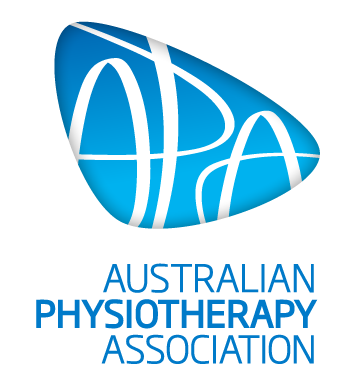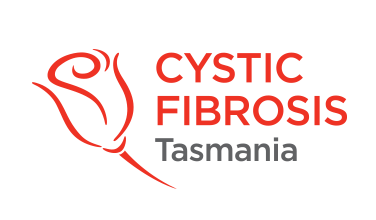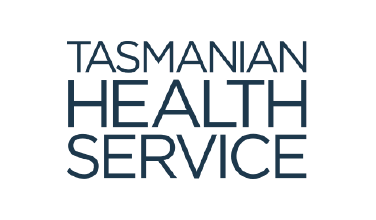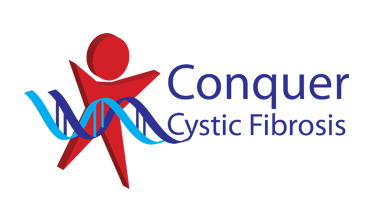Infection Control
LESSON 1: Common CF Pathogens
- Karem E, Corey M, Gold R, Levison H. Pulmonary function and clinical course in patients with cystic fibrosis after pulmonary colonization with Pseudomonas aeruginosa. Journal of Pediatrics. 1990; 116(5) 714-9.
- Emerson J, Rosenfeld M, McNamara S, Ramsey B, Gibson RL.Pseudomonas aeruginosaand other predictors of mortality and morbidity in young children with cystic fibrosis. Pediatric Pulmonology. 2002; 34(2): 91-100.
- Nixon GM, Armstrong DS, Carzino R, Carlin JB, Olinsky A, Robertson CF, et al. Clinical outcome after early Pseudomoas aeruginosainfection in cystic fibrosis. Journal of Pediatrics. 2001; 138(5): 699-704.
- Dasenbrook EC, Merlo CA, Diener-West M, Lechtzin N, Boyle MP. Persistent methicillin-resistant Staphylococcus aureusand rate of FEV1 decline in cystic fibrosis. American Journal of Respiratory and Critical Care Medicine. 2008; 178(8): 814-821.
- Isles A, Maclusky I, Corey M, Gold R, Prober C, Fleming P, et al. Pseudomonas cepaciainfection in cystic fibrosis: an emerging problem. Journal of Pediatrics. 1984; 104(2): 206-10.
- Blackburn, L, Brownlee K, Conway S, Denton M.‘Cepacia syndrome’ with Burkholderia multivorans, 9 years after initial colonization. Journal of Cystic Fibrosis. 2004; 3(2): 133-4.
- Waters V, Atenafu EG, Lu A, Yau Y, Tullis E, Ratjen F.Chronic Stenotrophomonas maltophiliainfection and mortality or lung transplantation in cystic fibrosis patients. Journal of Cystic Fibrosis. 2013; 12(5): 482-6.
- Floto RA, Haworth CS. The growing threat of nontuberculous mycobacteriain CF. Journal of Cystic Fibrosis. 2015; 14(1): 1-2.
- Sanguinetti M, Ardito F, Fiscarelli E, La Sorda M, D’Argenio P, Ricciotti G, et al. Fatal pulmonary infection due to multidrug-resistant Mycobacterium abscessusin a patient with cystic fibrosis. Journal of Clinical Microbiology. 2001; 39(2): 816-9.
- Taylor JL, Palmer SM. Mycobacterium abscessuschest wall and pulmonary infection in a cystic fibrosis lung transplant recipient. The Journal of Heart and Lung Transplantation: the official publication of the International Society for Heart Transplantation. 2006; 25(8): 985-8.
LESSON 2: Bacteria transmission and acquisition
- Kidd TJ, Soares Magalhaes RJ, Paynter S, Bell SC, Group ACI. The social network of cystic fibrosis centre care and shared Pseudomonas aeruginosastrain infection: a cross-sectional analysis. Lancet Respiratory Medicine. 2015; 3(8) 640-50.
- Ranganathan SC, Skoric B, Ramsay KA, Carzino R, Gibson AM, Hart E, et al. Geographical differences in first acquisition of Pseudomonas aeruginosain cystic fibrosis. Annals of the American Thoracic Society. 2013; 10(2) 108-14.
- Cheng K, Smyth RL, Govan JRW, Doherty C, Winstanley C, Denning N, et al. Spread of ß-lactam-resistant Pseudomonas aeruginosain a cystic fibrosis clinic. The Lancet. 1996; 348(9028) 639-42.
- Kidd TJ, Ramsay KA, Hu H, Marks GB, Wainwright CE, Bye PT, et al. Shared Pseudomonas aeruginosagenotypes are common in Australian cystic fibrosis centres. European Respiratory Journal. 2013; 41(5) 1091-100.
- Aaron SD, Vandemheen KL, Ramotar K, Giesbrecht-Lewis T, Tullis E, Freitag A, et al. Infection with transmissible strains of Pseudomonas aeruginosaand clinical outcomes in adults with cystic fibrosis. 2010; 304(19) 2145-53.
- Jones AM, Dodd ME, Morris J, Doherty C, Govan JR, Webb AK. Clinical outcome for cystic fibrosis patients infected with transmissible pseudomonas aeruginosa: an 8-year prospective study. 2010; 137(6) 1405-9.
- Knibbs LD, Johnson GR, Kidd TJ, Cheney J, Grimwood K, Kattenbelt JA, et al. Viability of Pseudomonas aeruginosain cough aerosols generated by persons with cystic fibrosis. 2014; 69(8) 740-5.
- Kidd TJ, Coulter C, Bell SC.Epidemiological analysis of methicillin-resistant Staphylococcus aureusisolates from adult patients with cystic fibrosis. Infection Control and Hospital Epidemiology. 2006; 27(2): 201-3.
- Wood ME, Sherrard LJ, Ramsay KA, Yerkovich ST, Reid DW, Kidd TJ, et al. Methicillin-resistant Staphylococcus aureusacquisition in healthcare workers with cystic fibrosis: a retrospective cross-sectional study. BMC Pulmonary Medicine. 2016; 16(1) 78.
- Govan JR, Brown PH, Maddison J, Doherty CJ, Nelson JW, Dodd M, et al.Evidence for transmission of Pseudomonas cepaciaby social contact in cystic fibrosis. 1993; 342(8862) 15-9.
- Jones AM, Dodd ME, Webb AK.Burkholderia cepacia: current clinical issues, environmental controversies and ethical dilemmas. European Respiratory Journal. 2001; 17(2): 295-301.
- Drabick JA, Gracely EJ, Heidecker GJ, LiPuma JJ.Survival ofBurkholderia cepaciaon environmental surfaces. The Journal of Hospital Infection. 1996; 32(4) 267-76.
- Ensor E, Humphreys H, Peckham D, Webster C, Knox AJ.Is Burkholderia (Pseudomonas) cepaciadisseminated from cystic fibrosis patients during physiotherapy? The Journal of Hospital Infection. 1996; 32(1) 9-15.
- Wainwright CE, France MW, O’Rourke P, AnujS, Kidd TJ, Nissen MD, et al. Cough-generated aerosols of Pseudomonas aeruginosaand other Gram-negative bacteria from patients with cystic fibrosis. 2009; 64(11) 926-31.
- Ridderberg W, Bendstrup KE, Olesen HV, Jensen-Fangel S, Norskov-Lauritsen N.Marked increase in incidence of Achromobacter xylosoxidansinfections caused by sporadic acquisition from the environment. Journal of Cystic Fibrosis. 2011; 10(6) 466-9.
- Aitken ML, Limaye A, Pottinger P, Whimbey E, Goss CH, Tonelli MR, et al.Respiratory outbreak of Mycobacterium abscessussubspecies massiliense in a lung transplant and cystic fibrosis center. American Journal of Respiratory and Critical Care Med. 2012; 185(2): 231-2.
- Bryant JM, Grogono DM, Greaves D, Foweraker J, Roddick I, Inns T, et al.Whole-genome sequencing to identify transmission of Mycobacterium abscessusbetween patients with cystic fibrosis: a retrospective cohort study. 2013; 381(9877) 1551-60.
- Bryant JM, Grogono DM, Rodriguez-Rincon D, Everall I, Brown KP, Moreno P, et al.Emergence and spread of a human-transmissible multidrug-resistant nontuberculous mycobacterium. 2016; 354(6313) 751-7.
LESSON 3: Physiotherapy infection control precautions
- Conway S, et al. European Cystic Fibrosis Society Standards of Care: Framework for the Cystic Fibrosis Centre. Journal of Cystic Fibrosis. 2014; 13: S3-S22.
- Saiman L, Siegal JD, LiPuma JJ, Brown RF, Bryson EA, Chamber MJ et al. Infection prevention and control guideline for cystic fibrosis: 2013. Infection Control and Hospital Epidemiology. 2014. 35: S1-S67.
- Cystic Fibrosis Trust. Standards for the clinical care of children and adults with Cystic Fibrosis in the UK. https://www.cysticfibrosis.org.uk/the-work-we-do/clinical-care/consensus-documents
- Saiman L, and Siegal J. Infection control recommendations for patients with Cystic Fibrosis: Microbiology, important pathogens, and infection control practices to prevent patient-to-patinet transmission. Infection Control and Hospital Epidemiology. 2003; 24: S6-S52.
- Cystic Fibrosis Foundation. Infection prevention and control clinical care guidelines – summary. Available from: https://www.cff.org/Care/Clinical-Care-Guidelines/Infection-Prevention-and-Control-Clinical-Care-Guidelines/Infection-Prevention-and-Control-Clinical-Care-Guidelines/
- Jones A, et al. Mycobacterium abscessus: Suggestions for infection prevention and control. Available from: https://www.cysticfibrosis.org.uk/the-work-we-do/clinical-care/consensus-documents
- Littlewood J, et al. The Burkholderia cepacia complex: Suggestions for prevention and infection control. Available from: https://www.cysticfibrosis.org.uk/the-work-we-do/clinical-care/consensus-documents
- Jones A, et al. Methicillin-resistant Staphylococcus aureus (MRSA). Available from: https://www.cysticfibrosis.org.uk/the-work-we-do/clinical-care/consensus-documents
- Littlewood J, et al. Pseudomonas aeruginosa infection in people with cystic fibrosis. Suggestions for Prevention and Infection Control.
- Cystic Fibrosis Foundation.11 ways for health care providers to guard against germs in health care settings. Available from: https://www.cff.org/Life-With-CF/Daily-Life/Germs-and-Staying-Healthy/How-Can-You-Avoid-Germs/Resources/For-Clinicans-11-Ways-to-Guard-Against-Germs-in-Health-Care-Settings.pdf
- Cystic Fibrosis Foundation.7 ways for people with CF to guard against germs in health care settings. Available from: https://www.cff.org/Life-With-CF/Daily-Life/Germs-and-Staying-Healthy/How-Can-You-Avoid-Germs/Resources/For-Patients-7-Ways-to-Guard-Against-Germs-in-Health-Care-Settings.pdf
- CNC Infection Management Prevention Service.Procedure; management of patients with cystic fibrosis. Brisbane, Children’s Health Queensland Hospital and Health Service.
- Wood ME, et al.Face masks and cough etiquette reduce the cough aerosol concentration ofPseudomonas aeruginosain people with Cystic Fibrosis. American Journal of Respiratory and Critical Care Medicine. 2017; 197: 348-355.
- Hand Hygiene Australia.5 moments for hand hygiene. Available from: http://www.hha.org.au/home/5-moments-for-hand-hygiene.aspx
LESSON 4: Equipment Cleaning
- Zimakoff J, Hoiby N, Rosendal K and Guilbert JP.Epidemiology of Pseudomonas aeruginosainfection and the role of contamination of the environment in a cystic fibrosis clinic. Journal of Hospital Infection. 1983; 4: 31-40.
- Savant AP, O’Malley C, Bichl S and McColley SA.Improved patient safety through reduced airway infection rates in a paediatric cystic fibrosis programme after a quality improvement effort to enhance infection prevention and control measures. BMJ Quality and Safety. 2014; 23: i73-i80.
- Saiman L, Siegal JD, LiPuma JJ, Brown RF, Bryson EA, Chamber MJ et al. Infection prevention and control guideline for cystic fibrosis: 2013. Infection Control and Hospital Epidemiology. 2014. 35: S1-S67.









